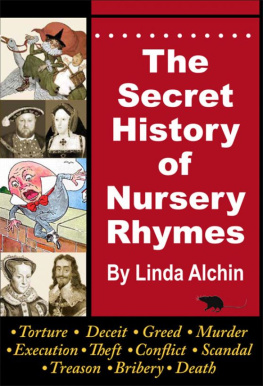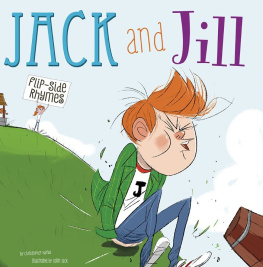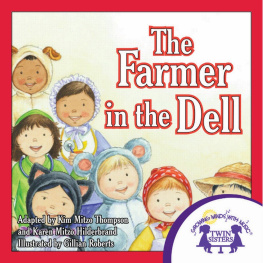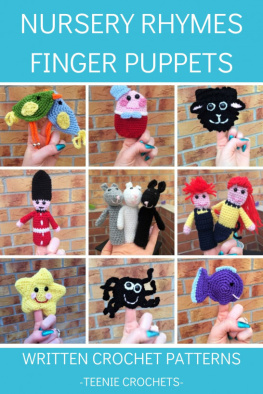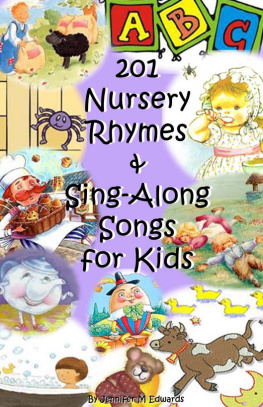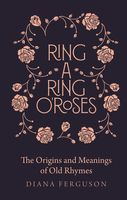The Secret History of Nursery Rhymes
By Linda Alchin
Smashwords Edition
Copyright 2011 Linda Alchin
Smashwords Edition, License Notes
This ebook is licensed for your personalenjoyment only. This ebook may not be re-sold or given away toother people. If you would like to share this book with anotherperson, please purchase an additional copy for each person. Ifyoure reading this book and did not purchase it, or it was notpurchased for your use only, then please return to Smashwords.comand purchase your own copy. Thank you.
The right of Linda Alchin to be identified asthe author of this work has been asserted by her in accordance withthe Copyright, Designs and Patents Act 1988. All rights reserved.No part of this publication may be transmitted or reproduced in anyform without the prior permission of the copyright owner. Firstpublished in 2010 by Babyseen Ltd, Surrey, England.
This Ebook is dedicated to our parents, whopatiently repeated these old much loved Nursery Rhymes, John &Marie Hughes and Richard & Diana Tidmarsh, and to children whoin their turn, patiently listened to them including John, Jack& Megan.
*****
This book uncovers the Secret History ofNursery Rhymes. Many of the history and origins of the humblenursery rhyme are believed to be associated with actual events inhistory, with references to murder and persecution, betrayal, greedand to tyrants and royalty. Rhymes are usually short and thereforeeasy to remember, a critical factor during the times when manypeople were unable to read or write. They were passed verbally fromone generation to the next before the invention of the printingpress. Reciting old Nursery Rhymes to our children is one of themost pleasurable first steps to developing their language skillsand extending their vocabulary. The words were remembered but theirsecret histories were forgotten.
Although some of the most popular NurseryRhymes are rooted in English history they are told to childrenthroughout the English-speaking world. Old English Nursery Rhymeswere taken to America with the settlers from England. They werethen spread across Commonwealth countries including Canada,Australia and New Zealand.
Political satire was cleverly disguised inthe wording of some, seemingly innocent, nursery rhymes. These wereused as safe vehicles to parody unpopular political, royal andhistorical events of the day. By this simple process, subversivemessages of discontent were spread in times when words of dissent,or the direct criticism of powerful people, would often have beenpunishable by torture or death.
Some interpretations of the rhymes arecontroversial; you may agree with some ideas and disagree withothers! Are they Truth or Fallacy? Difficult to decide consideringmuch of our accepted history is often based on pure conjecture.History is also biased! This view is perfectly illustrated in thewords of Winston Churchill who once said History will be kind tome for I intend to write it.
Another Winston also comes to mind whenconsidering the subject of truth. In the George Orwell novel,Nineteen Eighty-Four (1984) the nursery rhyme Oranges and Lemonsis only partially remembered by the principal character, WinstonSmith. Various characters contribute snippets of the rhyme untilthe verse is completed. But it is lost forever when the final fewpeople who remember it all die. Thankfully, we do not yet live inthe world described in Orwells Nineteen Eighty-Four and there isno Big Brother to prevent the eradication of our culture and thepublication of books such as this
*****
Table of Contents
Chapbooks
Mother Goose Publications
Old Mother Goose - Why Mother Goose
An Apple a Day
Baa Baa Black Sheep
Boys and Girls Come Out to Play
Christmas is Coming
Cry Baby Bunting
Diddle Diddle Dumpling
Ding Dong Bell
For Want of a Nail
Goosey Goosey Gander
Hark Hark the Dogs do Bark
Hey Diddle Diddle
Hickory Dickory Dock
Hot Cross Buns
Humpty Dumpty
Hush a Bye Baby
I Had a Little Nut Tree
Ladybug Ladybug (Ladybird Ladybird)
Pat a Cake Pat a Cake
Pease Pudding Hot
Pop goes the Weasel
Pussycat Pussycat
Rain Rain go Away
Ride a Cock Horse to Banbury Cross
Ring Around the Rosy (Ring a Ring ofRoses)
Sing a Song of Sixpence
There was a Crooked Man
There was an Old Woman
Three Blind Mice
Doctor Foster
Georgie Porgie
Hector Protector
Jack be Nimble (Jack b Nimble)
Jack and Jill
Jack Sprat (Jack Spratt)
Little Bo Peep
Little Boy Blue
Little Jack Horner
Little Miss Muffet
Little Tommy Tucker
Lucy Lockett
Mary had a Little Lamb
Mary Mary Quite Contrary
Old King Cole
Old Mother Hubbard
Peter Peter Pumpkin Eater
Simple Simon
The Grand Old Duke of York
The Queen of Hearts
Wee Willie Winkie
Mondays Child
Remember, Remember the Fifth of November
The Lion and the Unicorn
When Adam delved and Eve span
Red Sky at Night
St. Swithins Day
London Bridge is Falling Down
London Bridge is Broken Down
Oranges and Lemons
London Bells
*****
The History of Rhymes
Chapbooks
The Nursery Rhyme began to be printed inEngland as early as 1570, up to this point rhymes that had beenpassed to different generations verbally, then began to be passedon via the written form. Printing allowed the production of booksand cheap pamphlets, or Chapbooks. A chapbook is a small book orpamphlet containing 24 pages or less without a hard cover. Itcontains poems, ballads, stories, or religious tracts, and theywere usually anonymous and undated. The popularity of Chapbooksincreased during the 1600s, 1700s and 1800s but only a few ofthe early copies have survived. More people during this time werelearning to read but the chapbooks were very popular withilliterate majority as they contained pictures of crude woodengravings. The Chapbook was a Medieval equivalent of a Childscomic - documenting funny rhymes and folklore. The contents werecommitted from memory, which accounts for some variations in thelyrics and words of some Nursery Rhymes. The content and materialexpanded in the 1700s to include childrens stories like RobinsonCrusoe and various versions of Perraults Fairy Tales.
The Chapmen
Chapbooks were sold by Chapmen or peddlerswho sold, amongst other wares, the popular penny Chapbooks at localfairs. The Chapmen sold various wares that were easy to transportfrom one village or fair to the next and they attracted attentionby dancing and singing the old familiar Rhymes. The word Chaporiginates in Middle English, from the Old English capman meaningtrade add this to the word cheap to provide a full definitionof a Chapman. These old Chap books have given us most of our oldNursery Rhymes. English Ballads, Folklore and old legends were alsodocumented in the books and sung by wandering minstrels, whichhelped to continue the spread of the old Nursery Rhymes andLegends.
The Chapbook Printers and Publishers
The leading chapbook printers in 1780 included JohnMarshall who published, printed and sold chapbooks in the AldermaryChurchyard, which was situated next to the Church of St MaryAldermary in Bow Lane, London. It is also of interest to note thatNewbery Publishing House, who published Mother Gooses Melody orSonnets for the Cradle, was also set up in a similar location inSt. Pauls churchyard.
*****
Mother GoosePublications
The first known publication of a collectionof Nursery Rhymes was in 1744 and the first confirmed collection ofNursery Rhymes using the term Mother Goose was published in 1780,although a collection of stories called Mother Gooses Tales waspublished in 1729. The Mother Goose term caught the imagination ofprinters, publishers and the general public. Invariably theillustrations accompanying the publications depicted Mother Gooseas an old crone, or a witch. Various claims have been made claimingownership of the term Mother Goose, our search for the originshave established the following information.
Next page
